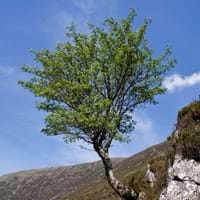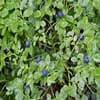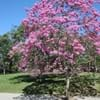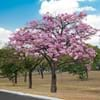Life Span
Perennial
Perennial
Type
Tree
Flowering Plants, Fruits, Trees
Origin
Asia, Europe, Northern Africa
Anatolia, Asia, Europe, Iran, Maghreb, Morocco, Norway, The Hiamalayas
Types
Sorbus aucuparia fenenkiana, Sorbus aucuparia glabrata, Sorbus aucuparia praemorsa
Flowering Cherries, Sour Cherries, Sand Cherries, Sweet Cherries, Capulin Cherries
Habitat
Temperate Regions
Forest edges, Wild, Woods
USDA Hardiness Zone
3-7
4-8
Sunset Zone
A1, A2, A3, 1a, 1b, 2a, 2b, 3a, 3b, 4, 5, 6, 7, 8, 9, 10, 14, 15, 16, 17
4, 5, 6, 7, 15, 16, 17
Habit
Oval or Rounded
Upright/Erect
Flower Color Modifier
Bicolor
Not Available
Fruit Color
Orange, Yellow
Red
Leaf Color in Spring
Green
Dark Green
Leaf Color in Summer
Green
Orange
Leaf Color in Fall
Dark Green
Orange
Leaf Color in Winter
Dark Green
Orange
Leaf Shape
Pinnate
Oblong
Plant Season
Spring, Fall
Spring, Summer
Sunlight
Full Sun, Partial Sun
Full Sun, Partial shade
Growth Rate
Medium
Medium
Type of Soil
Clay, Loam, Sand
Loamy, Well drained
The pH of Soil
Acidic, Neutral
Slightly Acidic
Soil Drainage
Average
Average
Bloom Time
Late Spring
Early Spring, Spring
Tolerances
Not Available
Heat And Humidity, Not Available
Where to Plant?
Ground
Ground
How to Plant?
Budding, Grafting, Stem Cutting
Grafting, Seedlings, Transplanting
Plant Maintenance
Medium
Medium
Watering Requirements
Do Not over Water, Water in the early morning hours
Never Over-water, Over-watering can cause leaf problems or root diseases, Prefer drip-irrigation instead of Over-head watering, Water twice a day in the initial period
In Summer
Lots of watering
Lots of watering
In Spring
Moderate
Moderate
In Winter
Average Water
Average Water
Soil pH
Acidic, Neutral
Slightly Acidic
Soil Type
Clay, Loam, Sand
Loamy, Well drained
Soil Drainage Capacity
Average
Average
Sun Exposure
Full Sun, Partial Sun
Full Sun, Partial shade
Pruning
Remove dead or diseased plant parts, Trim each shoot back to the first set of leaves
Don't prune in the fall, Prune if you want to improve plant shape, Prune in late winter, Remove dead or diseased plant parts, Remove deadheads
Fertilizers
All-Purpose Liquid Fertilizer, Doesn't require fertilization when grown in rich soil
All-Purpose Liquid Fertilizer
Pests and Diseases
Aphids, blister mites, Canker, fireblight, sawflies, Silver leaf
Aphids, Bacterial Canker, Black Knot, Brown Rot, Caterpillars
Plant Tolerance
Not Available
Drought
Flower Petal Number
Single
Not Available
Foliage Texture
Fine
Not Available
Foliage Sheen
Matte
Not Available
Allergy
Anxiety, Depression, High blood cholestrol, High blood pressure, Pain, Stress
Swelling in the face
Aesthetic Uses
along a porch, deck or patio, Showy Purposes
Showy Purposes
Beauty Benefits
Not Available
Not Available
Environmental Uses
Air purification, Food for birds, Shadow Tree
Air purification
Medicinal Uses
Diarrhea, Inflammation, Laxative, Urinary tract problems, Vitamin C
Arthritis, Gout, Kidney problems, Rheumatoid arthritis, Swelling
Part of Plant Used
Bark, Fruits, Wood
Flowers, Fruits
Other Uses
Used for its medicinal properties, Used for woodware
Wood is used for making furniture
Used As Indoor Plant
No
No
Used As Outdoor Plant
Yes
Yes
Garden Design
Feature Plant, Mixed Border, Topiary / Bonsai / Espalier
Not Available
Botanical Name
Sorbus aucuparia
Prunus avium
Common Name
Rowan, Mountain ash
Cherry Tree
In Hindi
रोवाण पौधा
चेरी का पेड़
In German
Rowan Tree
Kirschbaum
In French
Rowan Tree
Cerisier
In Spanish
Rowan Tree
Cerezo
In Greek
Rowan Tree
κερασιά
In Portuguese
Árvore de Rowan
árvore de cereja
In Polish
Rowan Tree
wiśniowe drzewo
In Latin
Rowan ligno
Cherry
Phylum
Magnoliophyta
Magnoliophyta
Class
Magnoliopsida
Magnoliopsida
Clade
Angiosperms, Eudicots, Rosids
Angiosperms, Eudicots, Rosids
Tribe
Not Available
Not Available
Subfamily
Not Available
Not Available
Number of Species
Not Available
Not Available
Properties of Rowan Tree and Cherry Tree
Wondering what are the properties of Rowan Tree and Cherry Tree? We provide you with everything About Rowan Tree and Cherry Tree. Rowan Tree doesn't have thorns and Cherry Tree doesn't have thorns. Also Rowan Tree does not have fragrant flowers. Rowan Tree has allergic reactions like Anxiety, Depression, High blood cholestrol, High blood pressure, Pain and Stress and Cherry Tree has allergic reactions like Anxiety, Depression, High blood cholestrol, High blood pressure, Pain and Stress. Compare all the properties and characteristics of these two plants. Find out which of these plant can be used as indoor plant. If you are interested to decorate your house and garden, find out aesthetic uses, compare them and select the plant which will beautify your surrounding. Along with beautification, try comparing medicinal and edible uses of Rowan Tree and Cherry Tree and you can choose the plant having best and most benefits.
Season and Care of Rowan Tree and Cherry Tree
Season and care of Rowan Tree and Cherry Tree is important to know. While considering everything about Rowan Tree and Cherry Tree Care, growing season is an essential factor. Rowan Tree season is Spring and Fall and Cherry Tree season is Spring and Fall. The type of soil for Rowan Tree is Clay, Loam, Sand and for Cherry Tree is Loamy, Well drained while the PH of soil for Rowan Tree is Acidic, Neutral and for Cherry Tree is Slightly Acidic.
Rowan Tree and Cherry Tree Physical Information
Rowan Tree and Cherry Tree physical information is very important for comparison. Rowan Tree height is 1,000.00 cm and width 800.00 cm whereas Cherry Tree height is 17.50 cm and width 17.50 cm. The color specification of Rowan Tree and Cherry Tree are as follows:
Rowan Tree flower color: White
Rowan Tree leaf color: Green
Cherry Tree flower color: White
- Cherry Tree leaf color: Dark Green
Care of Rowan Tree and Cherry Tree
Care of Rowan Tree and Cherry Tree include pruning, fertilizers, watering etc. Rowan Tree pruning is done Remove dead or diseased plant parts and Trim each shoot back to the first set of leaves and Cherry Tree pruning is done Don't prune in the fall, Prune if you want to improve plant shape, Prune in late winter, Remove dead or diseased plant parts and Remove deadheads. In summer Rowan Tree needs Lots of watering and in winter, it needs Average Water. Whereas, in summer Cherry Tree needs Lots of watering and in winter, it needs Average Water.





